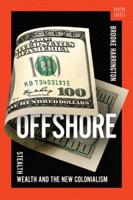Publisher's Synopsis
'This superb study ... is extensive in scope, and scrupulously fair. It will be a landmark.' Edward S. Herman, co-author (with Noam Chomsky) of Manufacturing Consent
'Coverage of the Israeli-Palestinian conflict is often dangerously superficial. Bad News from Israel is a strong contribution to scholarship and public debate.' John D.H. Downing
Director, Global Media Research Center, Southern Illinois University
'[The book] covers a lot of ground in a clear and readable manner and is particularly good at airing different views about the Arab-Israeli conflict.' Professor Avi Shlaim, St. Antony's College, University of Oxford
'A remarkable book.' Professor Lucrecia Escudero Chauvel, Université de Lille III and Paris VIII
'Just about everything that we know about Israel/Palestine comes to us from our television screens. Bad News from Israel reveals remarkable levels of ignorance about what and why things are as they are. What's more, the analysis offered here strongly suggests that the media are intimately linked to the perpetuation of this unhappy situation.' Professor Frank Webster
City University, London
Based on rigorous research by the world-renowned Glasgow University Media Group, this authoritative book examines media coverage of the current conflict in the Middle East and the impact it has on public opinion.
For the first time, the books brings together senior journalists and ordinary viewers to examine how audiences understand the news and how public belief and opinion have been shaped by media reporting.
In the largest study ever undertaken in this area, the authors focus on television news. They illustrate major differences in the way Israelis and Palestinians are represented, including how casualties are shown and the presentation of the motives and rationales of both sides. They combine this with an extensive audience study involving hundreds of participants from the USA, Britain and Germany. It shows extraordinary differences in levels of knowledge and understanding, especially amongst young people from these countries.
The book explores the processes that shape the news. It looks at patterns of ownership and at how public relations, information control and the close political links between the USA and Britain affect what we see and hear in the media.
The authors set the study in context by providing a history of the present crisis from the period of the British mandate in Palestine through to the Oslo and Wye Accords and the intifadas.











